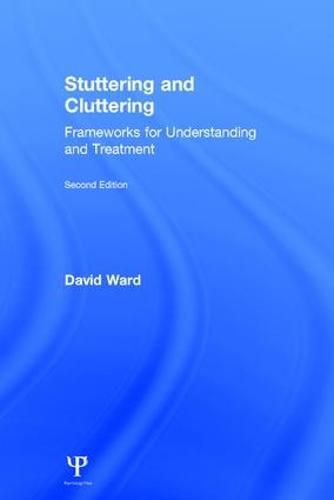Readings Newsletter
Become a Readings Member to make your shopping experience even easier.
Sign in or sign up for free!
You’re not far away from qualifying for FREE standard shipping within Australia
You’ve qualified for FREE standard shipping within Australia
The cart is loading…






Stuttering and Cluttering provides a clear, accessible and wide-ranging overview of both the theoretical and clinical aspects of two disorders of fluency: stuttering and cluttering. This edition remains loyal to the idea that stuttering and cluttering can best be understood by first considering various overarching frameworks which can then be expanded upon, and provides a clear position from which to disentangle the often complex interrelationships of these frameworks.
The book is divided into two parts, the first of which mainly deals with theory and aetiology, while the second focuses on clinical aspects of assessment, diagnosis and treatment. The book also provides frequent references across Parts I and II to help link the various areas of investigation together.
This revised edition of Stuttering and Cluttering reflects the major changes in thinking regarding both theory and therapy that have taken place since the publication of the first edition. As well as those who stutter and clutter, the book will be invaluable for speech language therapy/speech language pathology students, practicing clinicians, psychologists and linguists around the world.
$9.00 standard shipping within Australia
FREE standard shipping within Australia for orders over $100.00
Express & International shipping calculated at checkout
Stuttering and Cluttering provides a clear, accessible and wide-ranging overview of both the theoretical and clinical aspects of two disorders of fluency: stuttering and cluttering. This edition remains loyal to the idea that stuttering and cluttering can best be understood by first considering various overarching frameworks which can then be expanded upon, and provides a clear position from which to disentangle the often complex interrelationships of these frameworks.
The book is divided into two parts, the first of which mainly deals with theory and aetiology, while the second focuses on clinical aspects of assessment, diagnosis and treatment. The book also provides frequent references across Parts I and II to help link the various areas of investigation together.
This revised edition of Stuttering and Cluttering reflects the major changes in thinking regarding both theory and therapy that have taken place since the publication of the first edition. As well as those who stutter and clutter, the book will be invaluable for speech language therapy/speech language pathology students, practicing clinicians, psychologists and linguists around the world.